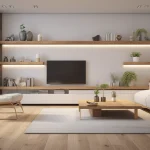
Painting can be one of the cheapest ways to transform a room, yet can also be tricky. Here are the secrets from professional painters on making sure your next paint job goes smoothly.
A key rule of painting should be avoiding humid days as humidity can increase the chances of drips and slow drying times, leading to potential disaster.
1. Mix Your Paints in a Five-Gallon Bucket
Even the same color of paint from different stores may have subtle tint differences that lead to inconsistent coverage on walls. To eliminate this possibility, professional painters “box” or combine multiple cans of the same wall paint in one bucket before stirring thoroughly to produce one consistent hue.
To combine paint, lower a heavy-duty paint stick into the bucket and scrape along its bottom surface until all solids have been removed from each can’s bottom tier. Use a stir stick to mix the mixture thoroughly.
2. Remove Electrical Outlet Plates and Switch Plates
Professional painters typically remove electrical outlet plates and switch covers prior to beginning a room painting job, making the task simpler while creating a more professional finish for the finished paint job. This technique results in smoother application.
Before taking steps to remove an electrical plate and cover, ensure the power has been turned off at your breaker panel to avoid shocks. Also consider placing each screw individually into plastic sandwich bags so they do not go missing! To protect yourself against electric shocks and ensure maximum safety when performing this task.
Other preparation tips include moving furniture out of the room before painting and then returning it once complete, using drop cloths or plastic tarps on the floor to protect against drips and spills, and lightly sanding walls before beginning; this step increases paint adhesion and coverage.
3. Load Your Brushes with Paint
By using premium paints and carefully prepping your space – with fabric drop cloths and blue painter’s tape used liberally – and refraining from overworking the brush, there’s no reason you cannot create an impressive-looking room.
Before using your brush for painting, load it by tapping gently against the interior of the paint can. This will eliminate heavy drips and prepare it for painting.
As you paint, begin with medium value colors on one side of your brush, and gradually pull it through lighter tones on the other. This creates a gradient of colors as you move down your wall.
4. Paint Right Over Your Mistakes
A fresh coat of paint can transform a room. However, while the process might appear simple, requiring only minimal effort from you for optimal results. However, its success requires close attention to every detail in order to produce professional-looking results.
Do-it-yourself painters often make the mistake of forgoing primer, which helps paint adhere better and can prevent uneven coloring. Skipping primer is often one of the primary mistakes made during DIY painting projects.
As one of the main mistakes DIYers make is failing to properly clean or sand the wall surface before painting, leaving behind ridges and uneven brush marks on the finish, not to mention picking up wet spots from previous coats, creating an uneven look.
5. Cover Your Floors and Furniture
Professional painters typically require two to four days for painting an average-sized room, as they take time and care in protecting floors and furniture from paint splatters and drips.
Move as much furniture as you can, and cover what remains with plastic sheets taped down over them. This protects them from drips and splatters as well as from sanding dust that could potentially scratch wood surfaces.
Do not use thin bed sheets or plastic sheeting as drop cloths – they won’t hold up under larger spills and quickly soak through. Instead, rosin paper is an inexpensive and heavy-duty material often used during construction and modeling projects to protect surfaces from being stained by splatters and spills on hardwood floors.
6. Use Egg Cartons
Don’t toss out those empty egg cartons just yet; they can be transformed into fun DIY projects both children and adults can enjoy. One such DIY idea involves turning egg cartons into paint palettes for quick access to multiple colors of paint.
Create the base of this activity by hot gluing three cartons together and allowing to dry before painting them with any design or shape you like. This activity is great for encouraging creativity, critical thinking, motor skills development and much more! Have fun making memories with this enjoyable activity!
Use this easy-to-follow tutorial to transform an egg carton into a bird mask, using just some supplies such as googly eyes and feathers.








